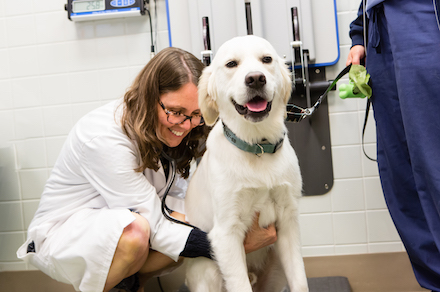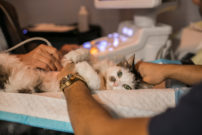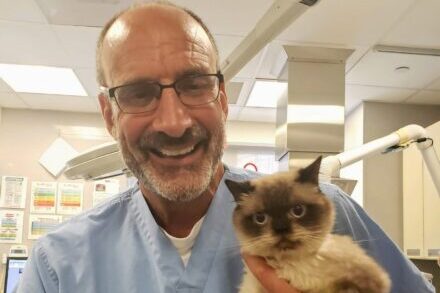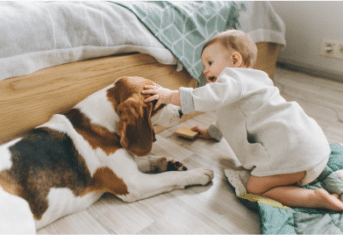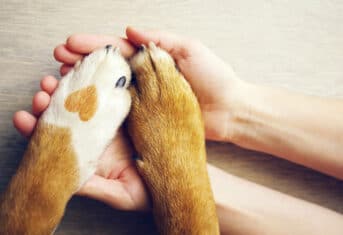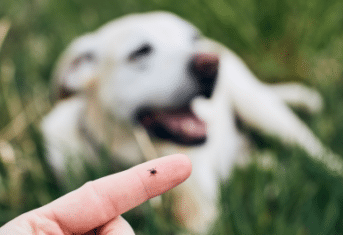Diabetes: A Serious Disease for You and Your Pet
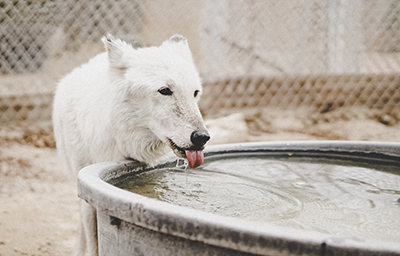
Diabetes: A Serious Disease for You and Your Pet
November is American Diabetes Month. According to the American Diabetes Association, a person is diagnosed with diabetes every 17 seconds, and annually the disease kills more Americans than breast cancer and AIDS combined. Diabetes also affects dogs and cats, but there are differences in the manifestations of the disease between the species.
My patient Charity has had diabetes since 2005. At that time, she was overweight and developed the most common form of diabetes in cats, Type II diabetes (non-insulin dependent diabetes). She still required insulin injections because uncontrolled high blood sugar caused a decrease in insulin levels due to the toxic effects of glucose on pancreatic insulin production. Although Charity is a female cat, neutered male cats with a sedentary lifestyle who become obese have a four times greater likelihood of developing diabetes. Genetics seem to play only a small role in the development of feline diabetes, most notably in the Burmese cats in Australia and the United Kingdom.
Type I diabetes (insulin-dependent diabetes) is the form most commonly found in dogs. Concurrent diseases such as obesity and hyperadenocorticism (Cushing’s disease) play a role in the development of diabetes in the dog. Since certain breeds such as Australian terriers, schnauzers and bichon frises are at greater risk of developing diabetes, genetics are believed to play a role in canine diabetes.
Treatment of diabetes in both dogs and cats almost always requires insulin injections. Insulin therapy, weight loss and a high-protein diet corrects the diabetic condition in some lucky cats. Charity lost four pounds following a diet change and insulin therapy, but her diabetes did not go into remission and still requires insulin injections six years later. For those pet owners who give insulin (or use needles at home to administer any medication), the syringes and needles must be properly disposed of to prevent injury to family members. The Food and Drug Administration has just developed a website for safe disposal of needles and sharps.
Hallmark signs of diabetes in dogs and cats include:
-Increased thirst
- Dogs may start drinking from strange places like the toilet or puddles in the yard. Most cats drink very little water, and if your cat becomes diabetic, you may actually need to refill the water bowl.
-Increased urinations
- For dogs this may manifest as accidents in the house. If you accidentally walk in a puddle of urine, it may seem sticky since it will be loaded with sugar. For cats, you may notice a litter box flooded with urine
-Weight loss despite a good appetite
If your pet is overweight, prevent diabetes by getting them into an ideal body condition through diet and exercise recommended by your veterinarian. If you recognize any signs of diabetes, see your veterinarian immediately.
For additional information on diabetes in pets, try the dLife video archives.
________________________________________________________
This may also be found in the “Tales from the Pet Clinic” blog on WebMD.com.
For over a century, The Animal Medical Center has been a national leader in animal health care, known for its expertise, innovation and success in providing routine, specialty and emergency medical care for companion animals. Thanks in part to the enduring generosity of donors, The AMC is also known for its outstanding teaching, research and compassionate community funds. Please help us to continue these efforts. Send your contribution to: The Animal Medical Center, 510 East 62nd Street, New York, NY 10065. For more information, visit amcny.gbtesting.us. To make an appointment, please call 212.838.7053.





